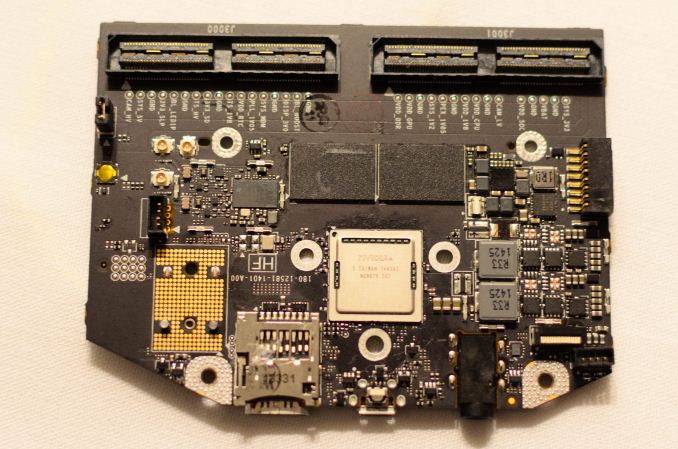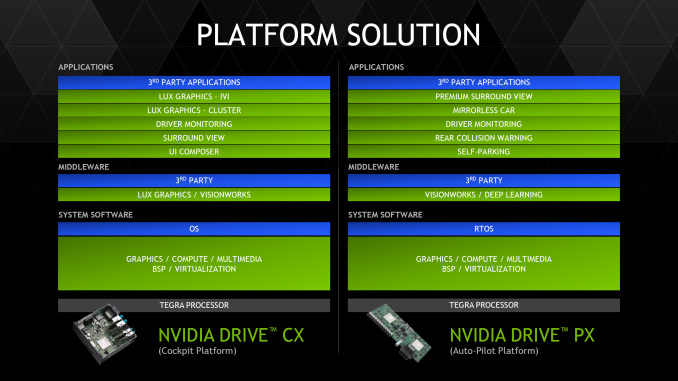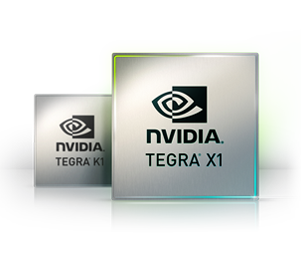NVIDIA Tegra X1 Preview & Architecture Analysis
by Joshua Ho & Ryan Smith on January 5, 2015 1:00 AM EST- Posted in
- SoCs
- Arm
- Project Denver
- Mobile
- 20nm
- GPUs
- Tablets
- NVIDIA
- Cortex A57
- Tegra X1
Final Words
With the Tegra X1, there have been a great deal of changes when compared to Tegra K1. We see a move from Cortex A15 to A57 on the main cluster, and a move from a single low power Cortex A15 to four Cortex A53s which is a significant departure from previous Tegra SoCs. However, the CPU design remains distinct from what we see in SoCs like the Exynos 5433, as NVIDIA uses a custom CPU interconnect and cluster migration instead of ARM’s CCI-400 and global task scheduling. Outside of these CPU changes, NVIDIA has done a great deal of work on the uncore, with a much faster ISP and support for new codecs at high resolution and frame rate, along with an improved memory interface and improved display output.
Outside of CPU, the GPU is a massive improvement with the move to Maxwell. The addition of double-speed FP16 support for the Tegra X1 helps to improve performance and power efficiency in applications that will utilize FP16, and in general the mobile-first focus on the architecture makes for a 2x improvement in performance per watt. While Tegra K1 set a new bar for mobile graphics for other SoC designers to target, Tegra X1 manages to raise the bar again in a big way. Given the standards support of Tegra X1, it wouldn’t be a far leap to see more extensive porting of games to a version of SHIELD Tablet with Tegra X1.
NVIDIA has also made automotive applications a huge focus in Tegra X1 in the form of DRIVE CX, a cockpit computing platform, and DRIVE PX, an autopilot platform. Given the level of integration and compute present in both DRIVE CX and PX, there seems to be a significant amount of value in NVIDIA’s solutions. However, it remains to be seen whether OEMs will widely adopt these solutions as car manufacturers can take multiple years to implement a new SoC. Compared to the 3-4 month adoption rate of an SoC in a phone or tablet, it's hard to pass any judgment on whether or not NVIDIA's automotive endeavors will be a success.
Overall, Tegra X1 represents a solid improvement over Tegra K1, and now that NVIDIA has shifted their GPU architectures to be targeted at mobile first, we’re seeing the benefits that come with such a strategy. It seems obvious that this would be a great SoC to put in a gaming tablet and a variety of other mobile devices, but it remains to be seen whether NVIDIA can get the design wins necessary to make this happen. Given that all of the high-end SoCs in the Android space will be shipping with A57 and A53 CPUs, the high-end SoC space will see significant competition once again.













194 Comments
View All Comments
esterhasz - Monday, January 5, 2015 - link
Only one of the three devices you mention runs on Denver cores (Nexus 9) and performance reviews have been very uneven for that device, to say the least.PC Perv - Monday, January 5, 2015 - link
Oh I don't know, man. All I know is that every Galaxy tablet has either Exynos or Snapdragon in it.OK, maybe not all of them but I do not think Tegra is in any of them.
kron123456789 - Monday, January 5, 2015 - link
Yeah but it's either Exynos 5420 or Snapdragon 800/801.darkich - Monday, January 5, 2015 - link
Well you dont know much then.Tegra K1 got to market along with the Snapdragon 805 and Exynos 5433.
Out of those three, the K1 took most design wins .
Dont compare the K1 with other Snapdragon and Exynos chips ,and the sea of MTK, Rockchip, Allwinner and Intel atoms chips.
It is an entirely different market
darkich - Monday, January 5, 2015 - link
Clarification- by "most design wins" I was referring to tablet market of courselucam - Wednesday, January 7, 2015 - link
Let's say 2 since one is Nvidia reference tablet and of course it always wins.chizow - Monday, January 5, 2015 - link
@jcwalla, I'm not sure there's "no fruit" from their investment, they are now on their 6th major iteration of Tegra (1-4, K1, X1) with a major variant in Denver K1 and while their marketshare and Tegra revenue won't reflect it, they are clearly the market leader in terms of performance for Android SoCs while going toe-to-toe with the monstrous Apple. Not bad, considering I am positive Apple is probably investing more than Nvidia's yearly revenue in keeping their SoC's relevant. ;)Breaking into an established market and growing a business from scratch is hard, but Nvidia clearly sees this as an important battle that needs to be fought. As a shareholder and tech enthusiast, I agree, in 10 years there's no doubt I would want an Nvidia GPU in whatever handheld/thin device I am using to power my devices.
The problem is that Nvidia lacks the "killer app" that really distinguishes their SoC over others. Even Apple is beginning to understand this as there's nothing on iOS that remotely takes advantage of the A8X's overkill specs. Nvidia needs to grow the Android/mobile gaming market before they really distinguish themselves, and from what I have seen, THAT is their biggest problem right now.
jwcalla - Monday, January 5, 2015 - link
Tegra is an important LOB for NVIDIA, but I'm more talking about how Denver has been received. When it was in the rumor stage, the scuttlebutt seemed to be about how they were going to marry ARMv8 CPU cores with discrete cards and take over the HPC world, etc. Then that got filtered down to "Yeah Denver is just a custom ARMv8 core for Tegra." (Which isn't earth-shattering; Qualcomm and Apple had been doing custom designs for a long time.) And now it doesn't seem like Denver is really anything special at all.But did it not involve a lot of hype, money, and time over all those years?
chizow - Monday, January 5, 2015 - link
Well, I think that HPC embedded ARM core in a massive GPGPU is still a possibility, but again, you're looking a very focused usage scenario, one which I think was pushed back by the process node delays at 20nm and now 16nm FinFET. We have seen since then Nvidia's roadmaps have changed accordingly with some of the features migrating vertically to new generation codenames.But the important point is that Nvidia's investment in mobile makes these options and avenues possible, even if Tegra isn't lightning up the P&L statements every quarter.
Yojimbo - Monday, January 5, 2015 - link
NVIDIA seems to be marrying themselves to IBM in the HPC space, but maybe ARM HPC is a different segment than what PowerPC occupies? I don't know. But IBM has a lot of experience and expertise in the area. Maybe NVIDIA thought they were biting off more than they could chew, maybe the Denver CPU just wasn't performing well enough, or maybe the opportunity with IBM came along because IBM realized they could benefit from NVIDIA as they didn't have anything to compete with Intel's Xeon Phi, and NVIDIA jumped at it.